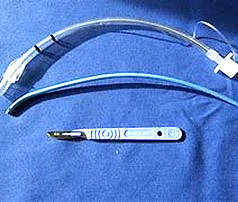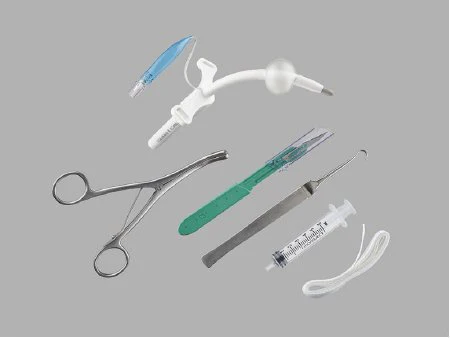Advanced Airway Management
Your Go-To for Advanced Airway How-To's

Airway Emergencies - Saving time can be a lifeline
Feb 28
3 min read
1
10
0
The Critical Importance of Immediate Access to FONA Equipment in All Anesthetic Locations
In a CICV emergency, minutes count! In the absence of ventilation and following the onset of hypoxia, brain damage can occur within 4-8 minutes if not reversed. Therefore, when other measures to ventilate and oxygenate a patient have failed, every effort to expedite the creation of an airway through the "front of the neck” is warranted.
In reviewing cases of lost airways, tragic outcomes were always preceded by delays of action.
If I think about it honestly, when an anesthesia provider is faced with the, perhaps, once in a career experience of a cannot intubate - cannot ventilate emergency, it comes as little wonder that there aren't more egregious delays in taking action. Once the emergency is recognized for what it is, and once the emergency is accepted psychologically by a provider, now a provider must act decisively, and for the first time in their career must perform an emergency surgical airway on a real patient in a true high stake's scenario. Many educational and training efforts have sought to positively impact and prepare a provider to rise to meet these moments, but there are still very simple things we can do to make things better.
In addressing these potential delays, the low hanging fruit is simply to make sure that we have easy and rapid access to emergency surgical airway equipment. Minutes are already eaten up rather quickly, and waiting for a surgical airway kit to arrive from the supply room wastes time that a hypoxic patient does not have. Relying on the availability of a scalpel in the anesthesia location ignores the fact that there aren't always scalpels in the room. And once again, waiting for a nurse to bring one to the room wastes time. Even a delay of 1 to 2 minutes can cut into up to half of a patient's time before they suffer irreversible brain injury or death.
So, in an effort to ensure that no delays are ever due to a lack of access to such simple and inexpensive equipment, a basic "FONA" (Front of the Neck Airway) kit is to be made available in all anesthetic locations.
FONA kits
Each kit contains skin prep, a 10-0 broad blade scalpel, a bougie, and a 6-0 endotracheal tube and is located in every anesthesia machine drawer and adult code bag. Reliable availability of these cost-effective (less than $30) FONA kits seek to eliminate delays in performing an emergent surgical airway and improve patient safety in time critical situations.
Our anesthesia technicians will work to ensure reliable kit availability. However, as always, it is also recommended that availability of all necessary patient safety equipment be routinely confirmed prior to providing anesthesia.
If you'd like a refresher on how to perform an emergency surgical airway using these FONA kits, you can find guidance here and a great video here.
Can I still use the manufactured kits?
Yes, the Melker – Emergency Cricothyroidotomy Kits (approximately $400 each) will continue to be stocked in ample numbers in the anesthesia supply rooms at HC, JMC and the VAMC. Should a provider prefer easy access to this particular kit, it is recommended that it be brought to the room as part of the basic room setup, prior to initiating any anesthetic.













